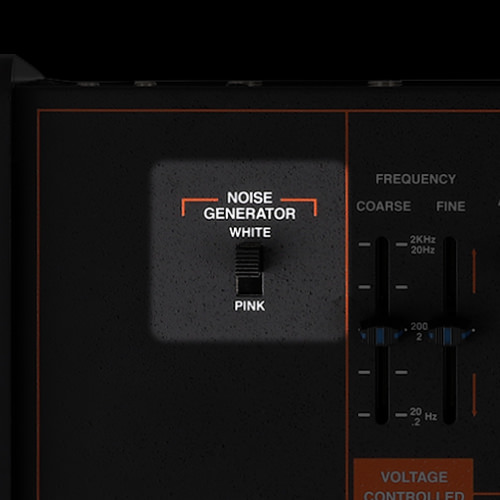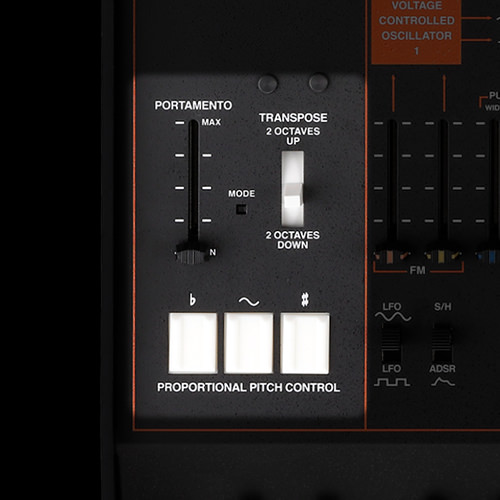TUTORIAL: NOISE / CONTROLLERS
2015.07.22In this series of tutorials, we will explore the parameters and history of the legendary ARP Odyssey in its current, reissued form. Here, we discuss NOISE and CONTROLLERS. Text: Ryota Hayashida (Iroha Studio)

NOISE GENERATOR
You can select either WHITE or PINK as the type of noise produced by the noise generator. WHITE noise can be described as “hiss,” while PINK noise is more of a lower-sounding “roar.” In the world of audio, noise is typically unwanted sound, but in the world of synthesizers it’s something to make use of in your sound design.
Most compact synthesizers provide only white noise as a noise source. White noise emphasizes the high frequencies, and is used as a sound source when you want to create rougher sound effects or wind-like sound. The ARP Odyssey lets you use noise not only as an audio source but also as a modulation source.
Pink noise has more punch in the low frequencies, and is often used for explosions, percussive drums, or with S/H (Sample & Hold) to obtain random voltages. (The noise will be rougher if you create distortion by turning on the DRIVE switch that’s located in the upper right of the panel.) It’s a simple module with only a switch, but there are many ways to use it. As with white noise, pink noise is not simply created by a low-pass filter (which cuts the high range); it uses a complex filter that produces a distinctive sound not obtainable elsewhere.

CONTROLLERS
PORTAMENTO smoothly connects changes in pitch. Suppose that you press one key, and then press a second key. At the moment that you press the second key, the pitch starts moving from the first key to the actual pitch over the time specified by PORTAMENTO. The result is that there’s a pitch change at the beginning of the noise, creating a somewhat human sound. This can also be effectively controlled using an external MIDI message. Portamento on/off can be switched by connecting a foot switch to the rear panel PORTAMENTO FOOTSWITCH jack, allowing you to apply portamento only to the desired section of your performance.
TRANSPOSE is a switch that lets you transpose the pitch up or down by two octaves. Perhaps it’s because the original ARP Odyssey tried to cover a broad range of octaves with a relatively small number of keys, but there are not many switches that provide two-octave transposition. However when you actually try using it, you’ll find that the two-octave reach is very well designed. It’s also nice that the lever is of a generous size that’s easy to grab during a performance. Since the ARP Odyssey’s VCO has a variable pitch, it’s easier to switch the octave here than to use the VCO to change the pitch.
MODE lets you switch the operation between Rev1 and Rev2/3; this switch selects whether portamento is enabled when you move TRANSPOSE. Rev1 was designed so that portamento was applied when you switched transpose. This is a switch that was not found on the original ARP Odyssey. You’ll find yourself wanting to apply PORTAMENTO and flip TRANSPOSE back and forth while you play.
PROPORTIONAL PITCH CONTROL is a controller known to original ARP Odyssey users under the abbreviation PPC. It was made of soft rubber, and allowed the pitch bend and vibrato strength to be adjusted by the pressure of your finger. On the original, this function was provided for later models (Rev3), although some middle-period models (Rev2) also had PPC added later. (At the time it was apparently possible to have it installed.) Until then, a simple round knob that you can could for pitch bend was attached here. The vibrato and pitch bend applied here are independent of the modulation settings applied by the VCO section. Although the LFO is common, PPC allowed more freedom in playing since the vibrato strength could be determined simultaneously for both VCO1 and VCO2.

 VCO
VCO